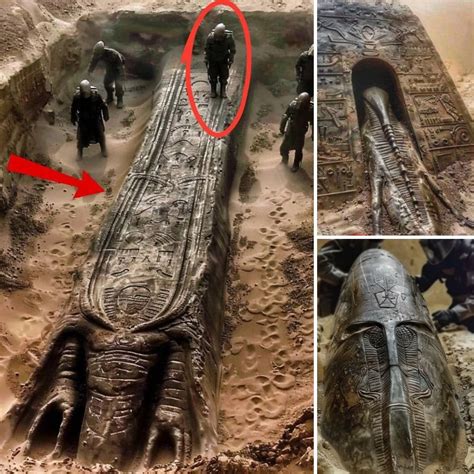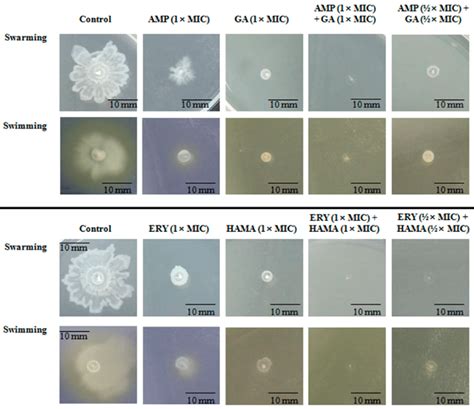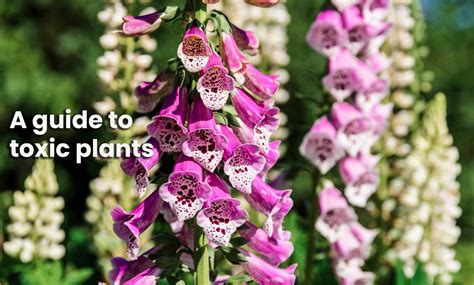
Archaeologists in Peru have unearthed three remarkably preserved tombs belonging to a high-status family from the pre-Inca Ichma culture, yielding a trove of funerary offerings including ceramics, textiles, and copper artifacts that shed light on the social structure and burial practices of the region between the 11th and 15th centuries.
Lima, Peru – A significant archaeological discovery has been made at the Huaca Pucllana site in the Miraflores district of Lima, where researchers have excavated three well-preserved tombs belonging to an elite family of the Ichma culture. The findings offer unprecedented insights into the funerary rituals, social hierarchy, and material culture of the pre-Inca civilization that thrived in the central coast of Peru centuries before the rise of the Inca Empire.
The Ichma culture, which flourished between 1100 AD and 1450 AD, occupied the valleys of the Rimac and Lurin rivers. Their principal religious and administrative center was Pachacamac, a vast archaeological complex that attracted pilgrims and served as a hub for trade and cultural exchange. The newly discovered tombs at Huaca Pucllana provide a complementary perspective on the Ichma people, revealing details about their daily lives, beliefs, and artistic expressions.
“This is a very important find because it gives us a more complete picture of the Ichma society,” said archaeologist Mirella Ganoza, the lead investigator of the excavation project. “These tombs show us not only how they buried their dead but also what kind of objects they valued and how they organized their social structure.”
The excavation team, comprising archaeologists, anthropologists, and conservators, spent several months carefully uncovering the tombs, which were located beneath a series of adobe platforms that form part of the Huaca Pucllana complex. The site, a massive pre-Columbian pyramid constructed from millions of adobe bricks, has been under archaeological investigation for several decades, yielding numerous discoveries that have contributed to our understanding of the pre-Inca cultures of Lima.
Each of the three tombs contained the remains of an individual, accompanied by a rich array of funerary offerings. The primary tomb, believed to belong to the head of the family, held the remains of an adult male, adorned with elaborate headdresses and jewelry made of copper and semi-precious stones. The other two tombs contained the remains of an adult female and a child, likely members of the same family.
Among the most notable artifacts recovered from the tombs are a collection of finely crafted ceramics, decorated with intricate geometric patterns and depictions of animals and mythological creatures. These vessels, which served as containers for food and drink offerings, provide valuable insights into the Ichma artistic style and their symbolic worldview. The archaeologists also found a variety of textiles, woven from cotton and camelid fibers, which were used to wrap the bodies and as grave goods. These textiles, preserved by the arid climate of the Peruvian coast, showcase the Ichma weaving techniques and their use of natural dyes.
Another significant find was a set of copper tools and ornaments, including knives, axes, and pendants. Copper was a valuable metal in pre-Columbian Peru, and its presence in the tombs indicates the high status of the individuals buried there. The copper artifacts were likely used for both practical and ceremonial purposes, reflecting the diverse roles of metal in Ichma society.
The discovery of the family tombs at Huaca Pucllana has generated considerable excitement among archaeologists and historians, who see it as a rare opportunity to learn more about the Ichma culture and its place in the broader history of Peru. The findings will be analyzed and conserved in the coming months, and the information gleaned from them will be used to create new exhibits and educational programs at the Huaca Pucllana site museum.
“This is a testament to the rich cultural heritage of Peru,” said Isabel Collazos, the director of the Huaca Pucllana archaeological project. “The Ichma culture may not be as well-known as the Inca, but they were a sophisticated and important civilization in their own right. These tombs help us to appreciate their achievements and to understand their legacy.”
The discovery also underscores the importance of archaeological research in Peru, which has a long and rich history of pre-Columbian cultures. The country is home to thousands of archaeological sites, many of which are still waiting to be explored and studied. The Peruvian government has made a commitment to protecting and promoting its cultural heritage, and it is working with international organizations and researchers to ensure that these sites are preserved for future generations.
The Huaca Pucllana site, located in the heart of modern Lima, is a prime example of the challenges and opportunities of urban archaeology. The site is surrounded by residential neighborhoods and commercial development, which makes excavation and preservation difficult. However, the site also serves as a reminder of the long and complex history of the city, and it provides a valuable green space in a densely populated area.
The discovery of the Ichma family tombs at Huaca Pucllana is just the latest chapter in the ongoing story of Peruvian archaeology. As researchers continue to explore and study the country’s ancient sites, they are constantly uncovering new information about the pre-Columbian cultures that once thrived there. These discoveries not only enrich our understanding of the past but also help us to appreciate the cultural diversity and resilience of the Peruvian people.
The artifacts recovered from the tombs are currently undergoing conservation and analysis at the Huaca Pucllana site laboratory. The archaeologists are using a variety of scientific techniques, including radiocarbon dating, DNA analysis, and isotopic analysis, to learn more about the age, origin, and relationships of the individuals buried in the tombs. They are also studying the materials and techniques used to create the ceramics, textiles, and metal artifacts, which will provide insights into the Ichma technology and trade networks.
The findings from the Huaca Pucllana excavation will be published in academic journals and presented at international conferences. The site museum is also planning to create a new exhibit featuring the artifacts from the tombs, which will be open to the public in the near future. The exhibit will include interactive displays and educational programs that will help visitors to learn more about the Ichma culture and its place in Peruvian history.
The discovery of the Ichma family tombs is a reminder that the past is always present, even in the most modern of cities. The ancient ruins of Huaca Pucllana stand as a silent witness to the centuries of human history that have unfolded in the Rimac Valley. By studying and preserving these sites, we can learn more about our shared past and build a better future.
The find is especially significant as it highlights the importance of continued archaeological work within urban settings. Often, development and modernization can overshadow the potential for historical discoveries. This excavation demonstrates that even in bustling city environments, invaluable historical treasures can still be unearthed, contributing significantly to our understanding of past civilizations. The careful and methodical approach of the archaeologists at Huaca Pucllana serves as a model for future urban archaeological endeavors, emphasizing the need for collaboration between researchers, local communities, and government agencies.
The long-term implications of this discovery extend beyond the academic realm. The increased understanding of the Ichma culture can foster a stronger sense of cultural identity and pride among the local population. By connecting with their ancestral heritage, residents of Lima can develop a deeper appreciation for the rich history of their city and the diverse cultures that have shaped its identity. This connection can also promote cultural tourism, generating economic opportunities and supporting the preservation of archaeological sites for future generations.
The Huaca Pucllana site itself is a testament to the resilience of ancient structures in the face of modern development. Despite being surrounded by contemporary buildings and infrastructure, the adobe pyramid has stood for centuries, offering a tangible link to the past. The ongoing archaeological work at the site not only reveals new information about the Ichma culture but also helps to protect and preserve this important historical landmark. The efforts to conserve the adobe structures, prevent erosion, and mitigate the impact of urban pollution are crucial for ensuring the long-term survival of Huaca Pucllana.
Furthermore, the discovery of the family tombs sheds light on the social dynamics within the Ichma culture. The presence of elaborate grave goods and precious materials suggests a hierarchical society with distinct social classes. The differences in the offerings found in each tomb may reflect the individual’s status, role, or achievements within the community. Further analysis of the skeletal remains and funerary objects could provide insights into the health, diet, and lifestyle of the Ichma people, as well as their beliefs about the afterlife.
The textiles recovered from the tombs are particularly valuable as they offer a glimpse into the Ichma weaving techniques and artistic traditions. The intricate patterns and designs woven into the fabrics may have had symbolic meanings, conveying information about the individual’s identity, lineage, or religious beliefs. The use of natural dyes, derived from plants and minerals, demonstrates the Ichma people’s knowledge of the natural environment and their ability to transform raw materials into beautiful and functional objects. The study of these textiles can also reveal connections between the Ichma culture and other contemporary societies in the Andes, as well as the exchange of ideas and technologies.
The copper artifacts found in the tombs provide evidence of the Ichma people’s metallurgical skills and their access to resources. Copper was a valuable metal in pre-Columbian Peru, used for making tools, weapons, ornaments, and ceremonial objects. The presence of copper artifacts in the tombs suggests that the individuals buried there had access to trade networks that extended beyond their local community. The study of the composition and manufacturing techniques of these artifacts can reveal information about the sources of the copper ore and the processes used to smelt and refine the metal.
The ceramics recovered from the tombs are another important source of information about the Ichma culture. The shape, size, and decoration of the ceramic vessels can provide insights into the Ichma people’s daily life, their food preparation techniques, and their artistic preferences. The intricate geometric patterns and depictions of animals and mythological creatures on the ceramics may have had symbolic meanings, reflecting the Ichma people’s beliefs about the natural world and their relationship with the supernatural. The study of the ceramic fragments can also reveal information about the firing techniques and the types of clay used to make the vessels.
The collaboration between archaeologists, anthropologists, conservators, and other specialists is essential for the successful excavation and analysis of the Huaca Pucllana site. Each discipline brings unique expertise and perspectives to the project, contributing to a more comprehensive understanding of the Ichma culture. The archaeologists are responsible for excavating the site, documenting the findings, and interpreting the context of the artifacts. The anthropologists study the skeletal remains to learn about the health, diet, and lifestyle of the Ichma people. The conservators work to preserve the fragile artifacts, preventing further deterioration and ensuring their long-term survival. The other specialists, such as radiocarbon dating experts, DNA analysts, and isotopic analysts, provide additional scientific data that helps to reconstruct the history of the site.
The involvement of the local community is also crucial for the success of the Huaca Pucllana project. The site museum offers educational programs and workshops for local residents, teaching them about the history of the Ichma culture and the importance of preserving their cultural heritage. The museum also employs local residents as guides, security guards, and maintenance workers, providing economic opportunities and fostering a sense of ownership over the site. The collaboration between the researchers, the local community, and the government agencies is essential for ensuring the sustainable management and preservation of Huaca Pucllana.
The Huaca Pucllana site is not only a valuable archaeological resource but also a green space in the heart of Lima. The site is surrounded by gardens and parks, providing a refuge for local residents and a habitat for wildlife. The preservation of the site helps to maintain the ecological balance of the urban environment and to promote sustainable development. The Huaca Pucllana project demonstrates that archaeological preservation and urban development can coexist, creating a more livable and sustainable city.
In conclusion, the discovery of the Ichma family tombs at Huaca Pucllana is a significant event in the history of Peruvian archaeology. The findings provide unprecedented insights into the funerary rituals, social hierarchy, and material culture of the pre-Inca civilization that thrived in the central coast of Peru centuries before the rise of the Inca Empire. The artifacts recovered from the tombs are undergoing conservation and analysis, and the information gleaned from them will be used to create new exhibits and educational programs at the Huaca Pucllana site museum. The discovery underscores the importance of archaeological research in Peru and the need to protect and preserve the country’s rich cultural heritage for future generations.
The preservation of sites like Huaca Pucllana is not just about conserving ancient artifacts; it’s about preserving the collective memory of humanity. Each discovery, each carefully excavated layer of earth, reveals another piece of the puzzle that helps us understand our origins, our evolution, and our shared destiny. The Ichma culture, once a vibrant civilization that shaped the landscape of coastal Peru, lives on through the artifacts they left behind, reminding us of the enduring power of human creativity, resilience, and innovation.
Frequently Asked Questions (FAQ)
1. What is the Ichma culture, and when did it exist?
The Ichma culture was a pre-Inca civilization that flourished in the central coast of Peru, specifically in the valleys of the Rimac and Lurin rivers, between 1100 AD and 1450 AD. They were eventually incorporated into the Inca Empire. “This is a very important find because it gives us a more complete picture of the Ichma society,” said archaeologist Mirella Ganoza.
2. Where were the family tombs discovered?
The tombs were discovered at the Huaca Pucllana archaeological site in the Miraflores district of Lima, Peru. Huaca Pucllana is a massive pre-Columbian pyramid constructed from millions of adobe bricks and has been under archaeological investigation for decades.
3. What types of artifacts were found inside the tombs?
The tombs contained a rich array of funerary offerings, including finely crafted ceramics decorated with geometric patterns and depictions of animals, textiles woven from cotton and camelid fibers, and copper tools and ornaments like knives, axes, and pendants. These artifacts provide insights into the Ichma artistic style, weaving techniques, and metallurgical skills.
4. Why is this discovery considered important?
This discovery is important because it offers unprecedented insights into the funerary rituals, social hierarchy, and material culture of the Ichma culture. The tombs reveal details about their daily lives, beliefs, and artistic expressions, providing a more complete picture of this pre-Inca society. “The Ichma culture may not be as well-known as the Inca, but they were a sophisticated and important civilization in their own right. These tombs help us to appreciate their achievements and to understand their legacy,” said Isabel Collazos, the director of the Huaca Pucllana archaeological project.
5. What will happen to the artifacts that were found?
The artifacts are currently undergoing conservation and analysis at the Huaca Pucllana site laboratory. Archaeologists are using techniques such as radiocarbon dating, DNA analysis, and isotopic analysis to learn more about the age, origin, and relationships of the individuals buried in the tombs. The findings will be published in academic journals, presented at international conferences, and featured in a new exhibit at the Huaca Pucllana site museum.
Expanded Details and Context:
Huaca Pucllana: A Window into Lima’s Ancient Past
Huaca Pucllana stands as a stark contrast against the modern cityscape of Lima, Peru. This pre-Columbian adobe pyramid, rising from the heart of the Miraflores district, offers a tangible connection to the region’s rich and complex past. Constructed by the Lima culture between 200 AD and 700 AD, and later adopted and modified by the Ichma culture, Huaca Pucllana served as a ceremonial and administrative center for centuries.
The pyramid itself is a testament to the engineering prowess of the ancient Peruvians. Built from millions of individually handcrafted adobe bricks, the structure is divided into two distinct sections: a ceremonial area with temples and plazas, and a residential area with houses and workshops. The adobe bricks, each bearing unique markings, were carefully arranged to create a stable and earthquake-resistant structure.
The ongoing archaeological investigations at Huaca Pucllana have revealed a wealth of information about the Lima and Ichma cultures. Excavations have uncovered numerous tombs, artifacts, and architectural features that provide insights into the daily lives, religious beliefs, and social organization of these ancient societies. The site also serves as a valuable resource for studying the environmental history of the region, as archaeologists have found evidence of ancient agricultural practices, irrigation systems, and climate change.
The discovery of the Ichma family tombs at Huaca Pucllana is particularly significant because it sheds light on a relatively little-known period in Lima’s history. The Ichma culture, which emerged after the decline of the Lima culture, played a crucial role in the development of the region. They were skilled farmers, traders, and artisans, and they established a network of settlements throughout the Rimac and Lurin valleys. Their principal religious and administrative center was Pachacamac, a vast archaeological complex that attracted pilgrims and served as a hub for trade and cultural exchange.
The tombs discovered at Huaca Pucllana offer a complementary perspective on the Ichma people, revealing details about their elite social structure and funerary rituals. The elaborate grave goods found in the tombs, including ceramics, textiles, and metal artifacts, demonstrate the wealth and status of the individuals buried there. The presence of family members in the same burial complex suggests a strong emphasis on kinship and lineage.
The Significance of the Funerary Offerings
The funerary offerings found in the Ichma family tombs provide a wealth of information about the culture’s beliefs and practices. Each artifact was carefully chosen and placed in the tomb, reflecting the individual’s status, role, and achievements in life.
The ceramics, for example, were not merely functional objects but also works of art. The intricate geometric patterns and depictions of animals and mythological creatures on the vessels may have had symbolic meanings, conveying information about the individual’s identity, lineage, or religious beliefs. The ceramics were likely used to hold food and drink offerings, which were intended to sustain the deceased in the afterlife.
The textiles, woven from cotton and camelid fibers, were another important part of the funerary offerings. The fabrics were used to wrap the bodies and as grave goods, providing warmth, protection, and adornment. The intricate patterns and designs woven into the textiles may have had symbolic meanings, similar to those found on the ceramics. The textiles also provide insights into the Ichma weaving techniques and their use of natural dyes.
The copper artifacts, including tools, weapons, ornaments, and ceremonial objects, were symbols of wealth and power. Copper was a valuable metal in pre-Columbian Peru, used for making a variety of objects. The presence of copper artifacts in the tombs suggests that the individuals buried there had access to trade networks that extended beyond their local community. The copper artifacts were likely used for both practical and ceremonial purposes, reflecting the diverse roles of metal in Ichma society.
The Role of Archaeology in Understanding the Past
The discovery of the Ichma family tombs at Huaca Pucllana underscores the importance of archaeological research in understanding the past. Archaeology is the scientific study of human history and prehistory through the excavation and analysis of material remains. By studying the artifacts, structures, and landscapes left behind by past civilizations, archaeologists can reconstruct the history of human societies and their interactions with the environment.
Archaeological research is particularly important in regions like Peru, which has a long and rich history of pre-Columbian cultures. The country is home to thousands of archaeological sites, many of which are still waiting to be explored and studied. These sites offer a wealth of information about the pre-Inca civilizations that once thrived in the Andes, including the Chavín, Paracas, Nazca, Moche, and Wari cultures.
Archaeological research can also help to promote cultural heritage preservation and tourism. By studying and preserving archaeological sites, we can protect our shared cultural heritage and promote a greater understanding and appreciation of the past. Archaeological sites can also serve as tourist destinations, generating economic opportunities and supporting the local communities.
The Challenges of Urban Archaeology
The Huaca Pucllana site, located in the heart of modern Lima, is a prime example of the challenges and opportunities of urban archaeology. Urban archaeology is the study of archaeological sites in urban environments, where development and modernization can often threaten the preservation of historical resources.
The challenges of urban archaeology include the destruction of archaeological sites by construction projects, the contamination of soil and artifacts by urban pollution, and the difficulty of excavating in densely populated areas. However, urban archaeology also offers unique opportunities for research and interpretation. Urban archaeological sites can provide insights into the history of cities, the lives of urban residents, and the interactions between different cultures and communities.
The Huaca Pucllana site has faced many of the challenges of urban archaeology. The site is surrounded by residential neighborhoods and commercial development, which makes excavation and preservation difficult. However, the site has also benefited from its location in the heart of Lima. The site has become a popular tourist destination, generating economic opportunities for the local community. The site museum offers educational programs and workshops for local residents, teaching them about the history of the Ichma culture and the importance of preserving their cultural heritage.
Future Research and Preservation Efforts
The discovery of the Ichma family tombs at Huaca Pucllana has opened up new avenues for research and preservation. Archaeologists plan to continue excavating the site, searching for additional tombs and artifacts. They also plan to conduct more detailed analyses of the artifacts already recovered, using scientific techniques such as radiocarbon dating, DNA analysis, and isotopic analysis.
The preservation of the Huaca Pucllana site is an ongoing effort. The adobe structures are vulnerable to erosion and decay, and they require constant maintenance and repair. The site managers are working to develop sustainable preservation strategies that will protect the site for future generations. They are also working to promote cultural tourism, generating economic opportunities and supporting the local community.
The Huaca Pucllana site serves as a reminder of the rich and complex history of Peru. The ancient ruins stand as a silent witness to the centuries of human history that have unfolded in the Rimac Valley. By studying and preserving these sites, we can learn more about our shared past and build a better future. The ongoing research and preservation efforts at Huaca Pucllana are essential for ensuring that this important historical landmark remains a source of knowledge and inspiration for generations to come. The focus extends beyond mere excavation; it encompasses the ethical responsibility to protect, interpret, and share the discoveries with the world, fostering a deeper understanding of human history and cultural heritage.









